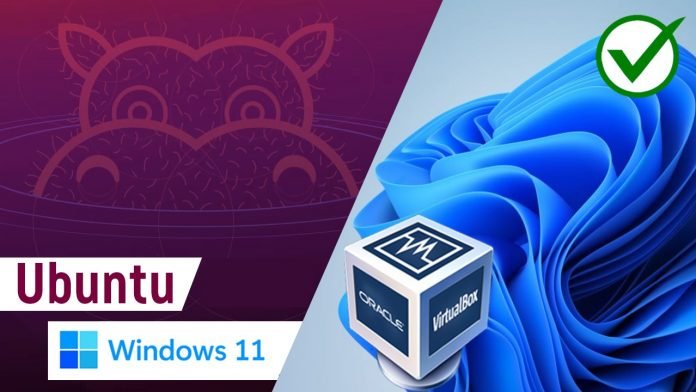How to Install Ubuntu in VirtualBox on Windows 11: Virtualization has revolutionized the way we interact with different operating systems. Whether you’re a developer, a Linux enthusiast, or simply curious about Ubuntu, VirtualBox provides a convenient platform to experience Ubuntu without the need for dedicated hardware. In this blog post, we will walk you through the step-by-step process of installing Ubuntu in VirtualBox on your Windows 11 host system.
Requirements
Before getting started, make sure you have the following:
- A Windows 11 host system.
- VirtualBox installed on your Windows 11 system. If you haven’t installed it yet, refer to our previous blog post on “Installing VirtualBox on Windows 11” for detailed instructions.
- The Ubuntu ISO file. You can download the latest Ubuntu ISO from the official Ubuntu website (https://ubuntu.com/download).
Installing Ubuntu in VirtualBox on Windows 11
Step 1: Launch VirtualBox: Open the VirtualBox application on your Windows 11 system.
Step 2: Create a New Virtual Machine: Click on the “New” button to create a new virtual machine.
Step 3: Name and Operating System: Provide a name for your virtual machine (e.g., “Ubuntu”) and select “Linux” as the type. Choose the Ubuntu version that matches your ISO file (e.g., Ubuntu 22.04 LTS 64-bit).
Step 4: Memory Size: Allocate the amount of memory (RAM) you want to assign to the virtual machine. It is recommended to allocate at least 2GB or more for a smooth experience. Click “Next” to proceed.
Step 5: Hard Disk: Choose “Create a virtual hard disk now” and click “Create.”
Step 6: Hard Disk File Type: Select the file type for the virtual hard disk. The default option, “VDI (VirtualBox Disk Image),” should work fine. Click “Next.”
Step 7: Storage on Physical Hard Disk: Choose “Dynamically allocated” to allow the virtual hard disk to grow as needed. Click “Next.”
Step 8: File Location and Size: Specify the location and size for the virtual hard disk file. Ensure that you allocate sufficient space for your Ubuntu installation. Click “Create” to proceed.
Step 9: Configure Virtual Machine Settings: In the VirtualBox main window, right-click on your newly created virtual machine and select “Settings.” Adjust settings such as display, storage, network, and more according to your preferences.
Step 10: Mount Ubuntu ISO: In the virtual machine settings, go to the “Storage” section. Under “Controller: IDE,” click on the CD/DVD icon and select “Choose a disk file.” Browse and select the Ubuntu ISO file you downloaded earlier.
Step 11: Start the Virtual Machine: Click “OK” to save the virtual machine settings. Then, select the virtual machine and click the “Start” button in the VirtualBox interface to power it on.
Step 12: Install Ubuntu: The virtual machine will boot from the Ubuntu ISO file. Follow the on-screen instructions to install Ubuntu within the virtual machine. You can choose the installation language, keyboard layout, partitioning options, and set up user credentials.
Step 13: Complete the Installation: Once the installation process is complete, restart the virtual machine. After rebooting, you will be greeted with the Ubuntu login screen.
Step 14: Install VirtualBox Guest Additions (Optional): For an enhanced experience, it is recommended to install VirtualBox Guest Additions in the virtual machine. This software package improves integration between the host and guest systems, enabling features like shared folders, seamless desktop integration, and better display resolution. To install Guest Additions, refer to our previous blog post on “Installing VirtualBox Guest Additions.”
Conclusion
By following these step-by-step instructions, you can easily install Ubuntu in VirtualBox on your Windows 11 system. VirtualBox provides a flexible and convenient platform to explore Ubuntu and its vast ecosystem without the need for separate hardware. Whether you want to experiment with Linux, test software, or create a development environment, Ubuntu in VirtualBox opens up a world of possibilities. Enjoy your Ubuntu experience within the virtual machine and leverage the power of virtualization to expand your computing horizons.
Rate post






























